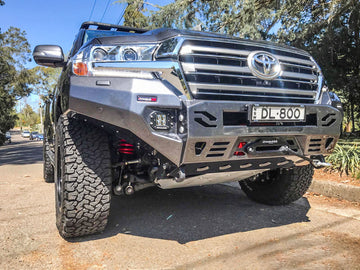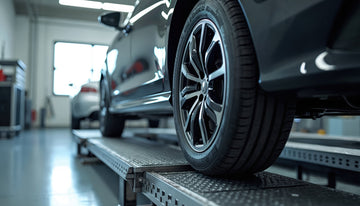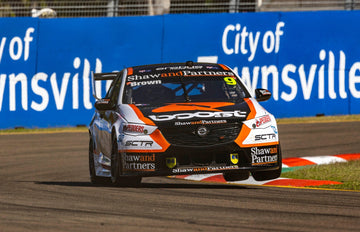Vehicle suspension is crucial for every driving experience as it absorbs shocks and vibrations. Improved suspension leads to a more controlled ride and ensures that the tyres maintain contact with the road.
The majority of suspension systems contain the following components:
- Springs
- Shock absorbers
- Control arms
- Ball joints
- Bushings
- Sway bars
- Wheel hubs
- Steering knuckles
With the wide variety of vehicles on the road, there are also numerous types of suspension systems designed to match their unique driving and performance needs.
We'll explore the different suspension types and help you determine which one is best suited for your vehicle.
What are some different types of suspension?
MacPherson Strut
The MacPherson strut is a widely used suspension system, particularly in front-wheel-drive vehicles. It integrates a coil spring and shock absorber into a single unit called a strut, which also serves as the upper mounting point for the steering knuckle.
This design is favoured for its simplicity, compact nature, and cost-effectiveness. It allows for more interior space in the engine bay and provides a comfortable ride for everyday driving.
Double Wishbone
The double wishbone suspension, or double A-arm, uses two control arms shaped like the letter "A" to connect the wheel to the vehicle's chassis. This configuration allows for precise control of wheel movement and camber angles throughout the suspension's travel.
The result is exceptional handling and stability, making it a top choice for sports cars and high-performance vehicles.
Multi-Link
Multi-link suspensions use multiple individual control arms to connect the wheel to the chassis, typically three to five per wheel.
This complex arrangement allows for precise control of wheel movement in all directions and offers excellent handling characteristics.
Multi-link systems can be finely tuned to balance comfort and performance, making them ideal for luxury vehicles and high-end sports cars.
Torsion Beam
Torsion beam suspension is commonly used in the rear of compact cars and hot hatches. It consists of a simple beam connecting the two rear wheels with integrated trailing arms.
As the wheels move, the beam twists to provide suspension action. This design is compact, cost-effective, and provides adequate performance for many vehicles.
Rigid Axle
A rigid axle, also known as a solid axle, is a simple and robust suspension design in which both wheels are connected by a single, solid beam.
This setup allows both wheels to move in unison, providing excellent durability and load-bearing capacity. Rigid axles are commonly found in utes, off-road vehicles, and some heavy-duty applications.
Leaf Spring
Leaf spring suspension uses several layers of curved metal strips (leaves) bound together to absorb road shocks.
Although leaf springs are less common in modern passenger cars, they remain popular in applications where load-bearing capacity and durability are essential.
Leaf springs support heavy loads and provide a stable ride under varying load conditions. They're durable and relatively simple in design but tend to be heavier than modern coil spring setups.
Trailing Arm
Trailing arm suspension uses arms that run parallel to the direction of travel to control wheel movement.
Each wheel is connected to the vehicle by a single arm that pivots at the front, allowing the wheel to move up and down.
This design is often used in rear suspensions and is known for being relatively simple and cost-effective. However, it may offer a different level of handling precision than more complex multi-link systems.
What factors determine which suspension system is the best?
- Vehicle type and purpose: The type of vehicle you own or plan to purchase is crucial in determining the ideal suspension system, as they all have different uses.
For instance, a sports car might benefit from a more rigid suspension for better handling, while an SUV might require a system that can handle various terrains and load capacities.
-
Driving conditions: Your typical driving environment significantly influences the choice of suspension. A comfort-oriented suspension might be preferable if you primarily drive on smooth highways. For those frequently encountering rough roads or engaging in off-road driving, a more robust suspension system with greater ground clearance and durability would be more suitable.
- Performance requirements: Your performance expectations from the vehicle will guide your suspension choice. For example, a firmer, sport-tuned suspension might be more appropriate if you want more responsive handling.
-
Budget: The overall cost encompasses both the initial purchase price and long-term maintenance expenses. More complex suspension systems, such as air suspension or multi-link setups, tend to be more expensive to install and maintain, while simpler systems, like MacPherson struts, are generally more budget-friendly.
- Handling characteristics: Your vehicle's desired handling characteristics will significantly influence your suspension choice. If you crave precise cornering and high-speed stability, a sophisticated suspension system is the way to go. However, if you prioritise straight-line stability and don't need agile cornering, a simpler suspension will do the trick.
-
Vehicle weight and design: The weight distribution and overall design of your vehicle affect suspension selection. Front-wheel-drive, rear-wheel-drive, and all-wheel-drive vehicles often have different suspension needs. Additionally, heavier vehicles require more robust suspension components to manage the additional mass effectively.
-
Maintenance and reliability: Consider the long-term maintenance requirements and reliability of different suspension systems. Some complex systems offer superior performance but require more frequent and costly maintenance. Simpler systems are often more reliable and easier to maintain over time.
- Space considerations: The available space in your vehicle for suspension components can limit your options. Some suspension designs are more compact, while others might require more room, potentially impacting the vehicle's overall design and space utilisation.
Do I need aftermarket suspension?
It’s worth considering aftermarket suspension if:
- You're unsatisfied with your current ride quality or handling
- You want to improve your vehicle's performance
- You need to address worn-out stock suspension
- You're looking to raise or lower your vehicle's ride height
- You’re frequently carrying heavy loads or towing
If you’re thinking about upgrading your vehicle's stock suspension, please contact us.
With expert insights and high-quality products, we’ll ensure you get the perfect suspension setup for ultimate performance and control.





